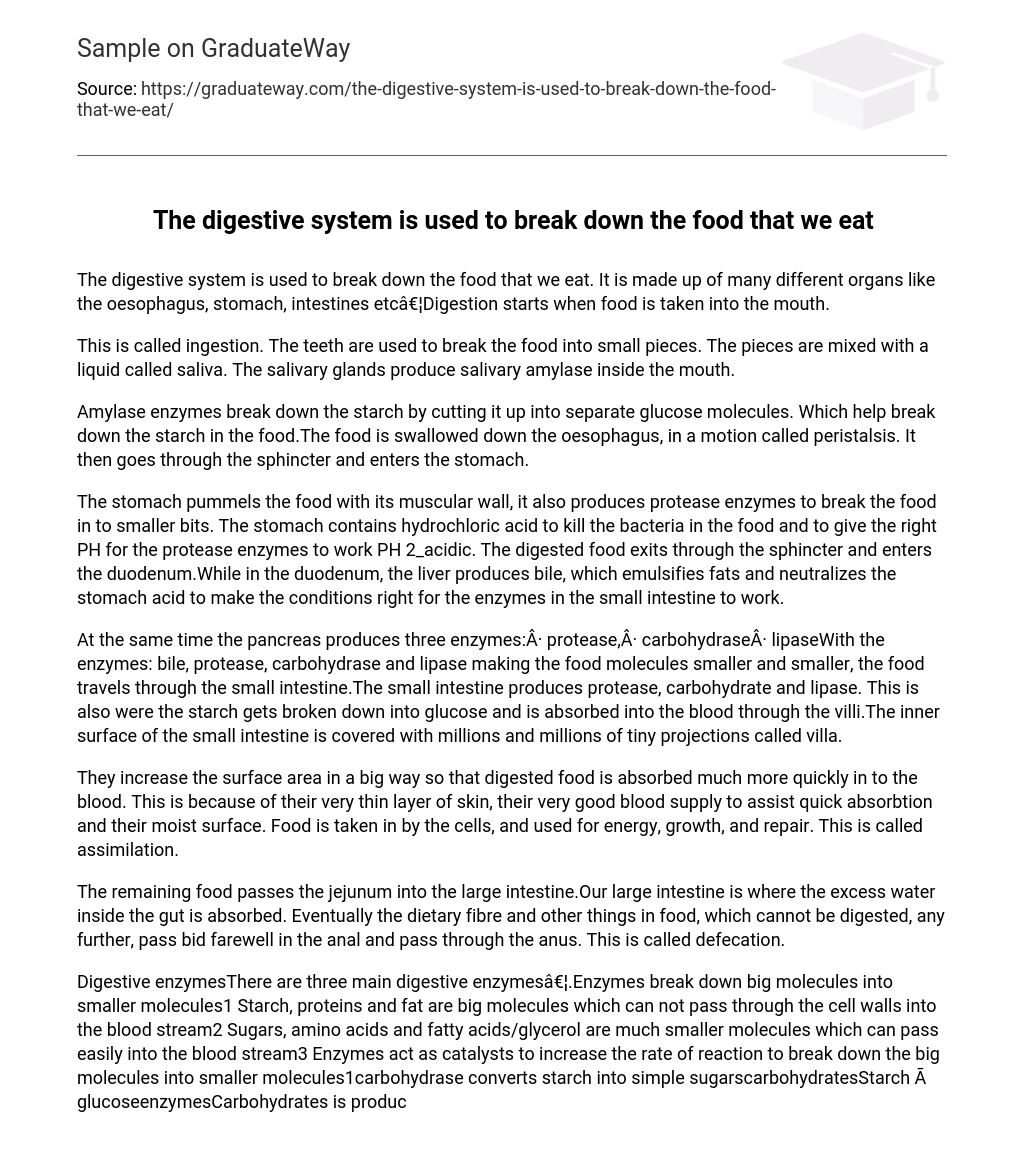The digestive system is used to break down the food that we eat. It is made up of many different organs like the oesophagus, stomach, intestines etc…Digestion starts when food is taken into the mouth. This is called ingestion. The teeth are used to break the food into small pieces. The pieces are mixed with a liquid called saliva. The salivary glands produce salivary amylase inside the mouth.
Amylase enzymes break down the starch by cutting it up into separate glucose molecules. Which help break down the starch in the food.The food is swallowed down the oesophagus, in a motion called peristalsis. It then goes through the sphincter and enters the stomach.
The stomach pummels the food with its muscular wall, it also produces protease enzymes to break the food in to smaller bits. The stomach contains hydrochloric acid to kill the bacteria in the food and to give the right PH for the protease enzymes to work PH 2_acidic. The digested food exits through the sphincter and enters the duodenum.While in the duodenum, the liver produces bile, which emulsifies fats and neutralizes the stomach acid to make the conditions right for the enzymes in the small intestine to work.
At the same time the pancreas produces three enzymes:
- protease,
- carbohydrase
- lipase
With the enzymes: bile, protease, carbohydrase and lipase making the food molecules smaller and smaller, the food travels through the small intestine.The small intestine produces protease, carbohydrate and lipase. This is also were the starch gets broken down into glucose and is absorbed into the blood through the villi.The inner surface of the small intestine is covered with millions and millions of tiny projections called villa.
They increase the surface area in a big way so that digested food is absorbed much more quickly in to the blood. This is because of their very thin layer of skin, their very good blood supply to assist quick absorbtion and their moist surface. Food is taken in by the cells, and used for energy, growth, and repair. This is called assimilation.
The remaining food passes the jejunum into the large intestine.Our large intestine is where the excess water inside the gut is absorbed. Eventually the dietary fibre and other things in food, which cannot be digested, any further, pass bid farewell in the anal and pass through the anus. This is called defecation.
The alkaline neutralizes the acid from the stomach to make the conditions right for the enzymes in the small intestine to work2 Bile also emulsifies fats. In other words it breaks the fat into tiny droplets. This gives a much bigger surface area of fat for the fat enzymes e.g. lipase to work on. The model gutObjectives:1 To investigate how our small intestine works and what it does. The right is a plasticsubstance Which has tinyholes which are smallenough only for glucoseto pass through, thissymbolises our small intestine.





